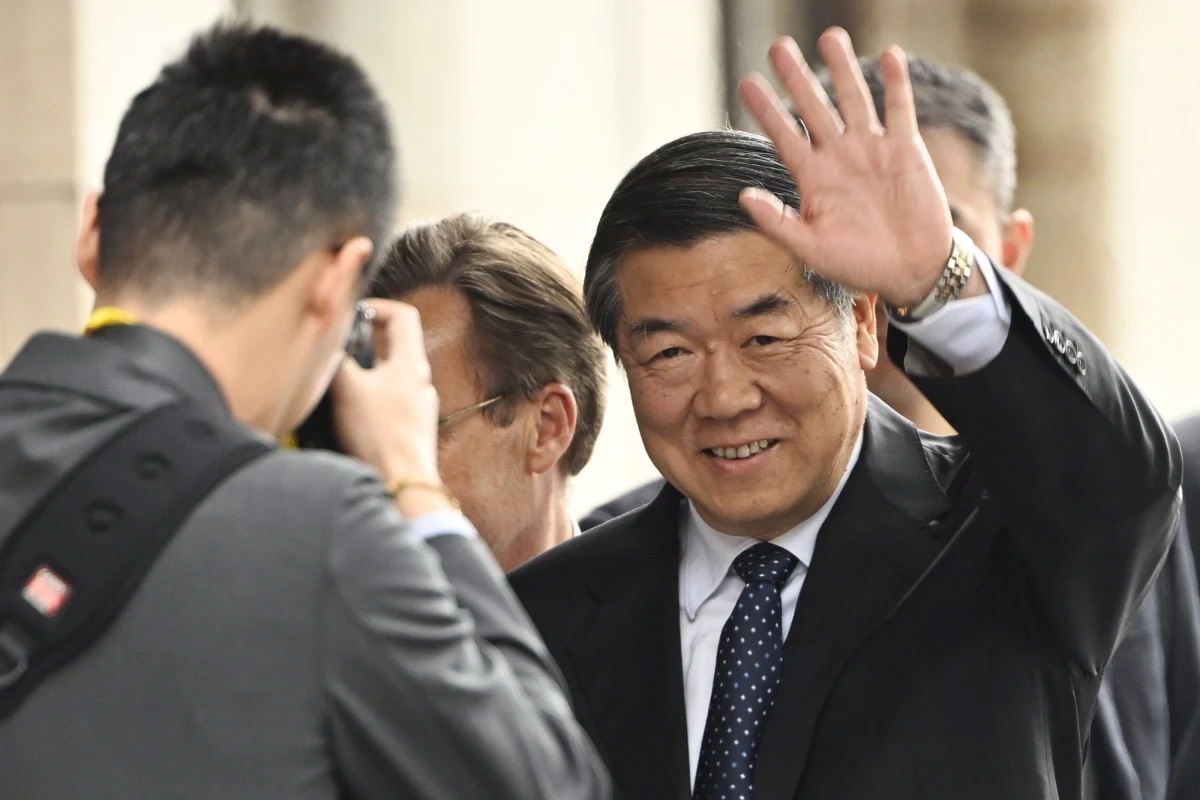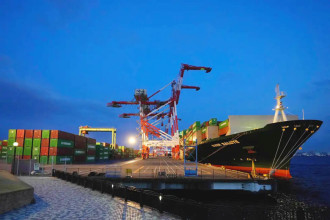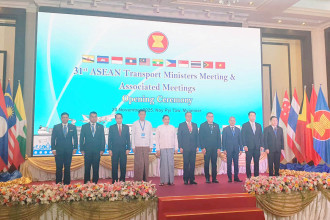
STOCKHOLM: Top trade officials from China and the United States launched a new round of talks on Monday in a bid to ease tensions over tariffs between the world’s two biggest national economies.
US Treasury Secretary Scott Bessent and Chinese Vice Premier He Lifeng were meeting at the offices of Sweden’s prime minister for two days of talks, which Bessent has said will likely lead to an extension of current tariff levels.
But other possible outcomes will be scrutinised by markets and businesses for signs of a rapprochement, after brinkmanship earlier this year.
Analysts say the talks could set the stage for a possible meeting between US President Donald Trump and Chinese President Xi Jinping later this year.
Other issues on the agenda include access of American businesses to the Chinese market; Chinese investment in the US; components of fentanyl made in China that reach US consumers; Chinese purchases of Russian and Iranian oil; and American steps to limit exports of Western technology, like chips that help power artificial intelligence systems.
The talks ended for the day after nearly five hours on Monday, and were set to reconvene on Tuesday morning.
‘Large and confident partner’
Wendy Cutler, a former US trade negotiator and now vice president at the Asia Society Policy Institute, said that Trump’s team would face challenges from “a large and confident partner that is more than willing to retaliate against US interests.”
Rollover of tariff rates “should be the easy part,” she said, warning that Beijing has learned lessons since the first Trump administration and “will not buy into a one-sided deal this time around.”
“Beijing is more prepared and will insist on movement on US tech export controls at a minimum — a difficult ask for Washington,” she said, adding that many conversations will take place in the lead-up to any Xi-Trump summit.
“Success is far from guaranteed,” Cutler said. “There are numerous trip wires that can throw a wrench in this preparatory process.”
The US-China trade talks are the third this year, nearly four months after Trump upended global trade with his sweeping tariff proposals, including an import tax that shot up to 145% on Chinese goods. China retaliated with tariffs reaching 125% against US goods, sending global financial markets into a temporary tailspin.
Extending a 90-day pause
The Stockholm meeting, following similar talks in Geneva and London, is set to extend a 90-day pause on those tariffs. During the hiatus, US tariffs have been lowered to 30% on Chinese goods, and China set a 10% tariff on US products.
The Trump administration, which just completed a deal on tariffs with the European Union, wants to reduce a trade deficit of $904 billion overall last year, including a nearly $300 billion trade deficit with China.
China’s Commerce Ministry said last week that the “consultations” would raise shared concerns through the principles of “mutual respect, peaceful coexistence and win-win cooperation.”
The talks with Beijing are part of a flurry of US trade negotiations set off by Trump’s arm-twisting “Liberation Day” tariffs against dozens of countries. Since then, some talks have borne fruit in reaching deals. Others have not.
Without an extension by Aug 12, the tit-for-tat US-China tariffs could snap back to the triple-digit levels seen before the 90-day pause reached in Geneva. Many other countries — including some developing ones that depend on exports to the US face a deadline of Friday, as the Trump administration has said that letters will go out beforehand with set rates.
Critics say Trump’s tariffs penalise Americans by forcing US importers to shoulder the costs or pass them on to consumers through higher prices.
Suggestion of stability
On Friday, Trump told reporters that “we have the confines of a deal with China” just two days after Bessent told MSNBC that a “status quo” had been reached between the two sides.
While the Chinese side has offered little guidance about the specifics of its aims in Stockholm, Bessent has suggested that the situation has stabilised to the point that China and the US can start looking toward a longer-term balance between their economies.
For years, since China vaulted into the global trading system about two decades ago, the United States has sought to press leaders in Beijing to encourage more consumption in China and wrest greater market access to foreign-made including American goods.
Other sticking points in the relationship include overcapacity in China by far the world’s largest manufacturer and concerns about whether Beijing is doing enough to control chemicals used to make fentanyl, analysts say.
In Stockholm, the Chinese will likely demand the removal of a 20% fentanyl-related tariff that Trump imposed earlier this year, said Sun Yun, director of the China program at the Washington-based Stimson Centre.
Looking long-term
Experts say long-term progress in the US-China trade relationship will hinge on structural changes.
Those include increased manufacturing in the United States, which is part of Trump’s ambition. On the Chinese side, that could involve a reduction of excess Chinese production in many industries, including electric vehicles and steel, and increased Chinese consumer spending to ease imbalances in China’s export-driven economy.
Sean Stein, president of the US-China Business Council, said the talks in Stockholm offer an opportunity for the two governments to address structural reform issues. Businesses will watch for clues about a possible Trump-Xi summit, because any real deal will depend on a meeting between the pair, he said.
A deal is possible because “a lot of the things that the US wants, the Chinese want as well,” Stein said.
China, for example, is interested in buying US soybeans, and aircraft and parts, and Chinese businesses are interested in investing in US manufacturing, which would help meet Trump’s goal of reindustrialisation.
Bessent has also said the Stockholm talks could address Chinese purchases of Russian and Iranian oil.
By RSS/AP






